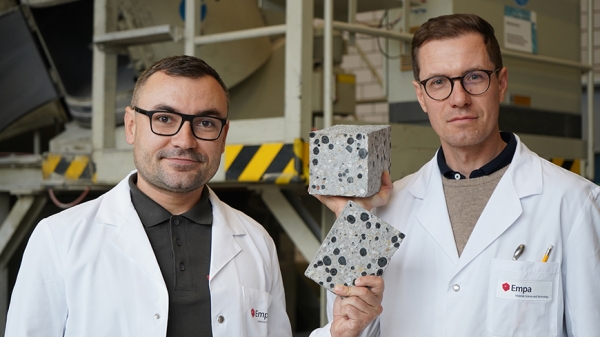The construction industry as a CO2 sink? Researchers at Empa's Concrete & Asphalt lab are working on this. By incorporating biochar into concrete, they are exploring the potential of CO2-neutral or even CO2-negative concrete. For optimal applicability, they process the biochar into pellets and use them to replace conventional aggregates.
To achieve the goal of a climate-neutral Switzerland by 2050, strategies and processes with a negative CO2 balance are necessary. These so-called negative emission technologies (NET) are intended to counterbalane the remaining "hard-to-avoid" emissions in 2050 and should help ensure that we eventually achieve net zero. As one of the main emitters, the construction sector has a particular obligation. Around eight percent of global greenhouse gas emissions are caused by cement production. At the same time, initial efforts are emerging to use the construction sector, with its massive consumption of resources, as a possible carbon sink. What sounds paradoxical will succeed if we start "building with CO2" – or rather, using carbon to produce building materials and thus removing it from the atmosphere in the long term. For such visions to become reality, a great deal of research is needed – such as is currently being done at Empa's Concrete & Asphalt lab. A team led by Pietro Lura is developing a process for integrating biochar into concrete.
Read more at Swiss Federal Laboratories for Materials Science and Technology (EMPA)
Image: Concrete without emissions: Empa researchers Mateusz Wyrzykowski (right) and Nikolajs Toropovs are replacing conventional aggregates with pellets made from biochar, thus exploring the potential of CO2-neutral or even negative concrete. Photo Credit: Empa


